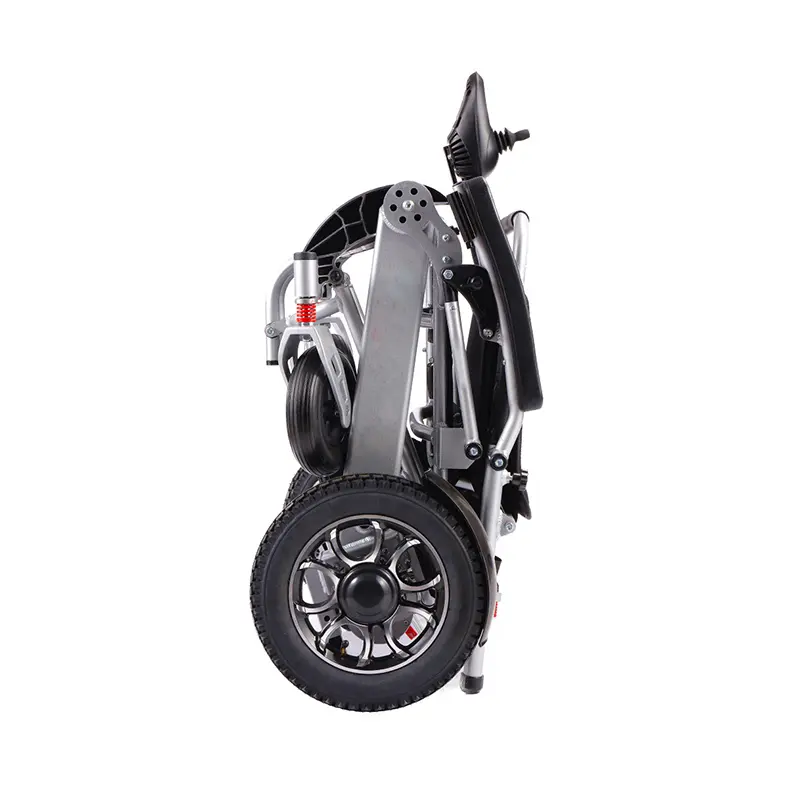What is the braking distance standard for electric wheelchairs on ramps?
Braking distance standard for electric wheelchairs on ramps: key data and in-depth analysis
As an important travel aid for people with limited mobility, the safety of electric wheelchairs is of vital importance, and braking distance is one of the important indicators for measuring the safety of electric wheelchairs. On different slopes, the braking distance standards of electric wheelchairs vary. The following is a detailed introduction to the relevant standards:
Domestic standards
According to GB/T 12996-2012 “Electric Wheelchairs”:
Item Indoor type Outdoor type Road type
Maximum safe slope braking distance (m) ≤1.6 (3°) ≤3.6 (6°) ≤6 (8°)
According to GB/T 12996-2024 “Electric Wheelchairs”:
Item Indoor type Outdoor type Road type
Maximum safe slope braking distance (m) ≤1.6 (3°) ≤3.6 (6°) ≤6 (8°)
Local standards
According to Q/HBDT01-2021 “Electric Wheelchairs”:
Item Indoor type Outdoor type
Maximum safe slope braking distance (m) ≤1.6 (3°) ≤3.6 (6°)
According to T/ZZB 1355-2019 “Electric Wheelchair” stipulates:
Item Indoor type Outdoor type
Maximum safe slope braking distance (m) ≤1.0 (6°) ≤1.5 (6°)
International standard
International standard ISO 7176/18:2021 “Disability Service Non-road Electric Wheelchair Part 18: Dynamic Stability Determination” stipulates:
Item Indoor type Outdoor type
Maximum safe slope braking distance (m) ≤1.6 (3°) ≤3.6 (6°)
Factors affecting braking distance
The length of the braking distance is affected by many factors, the following are some of the main factors:
Wheelchair speed
The faster the speed, the longer the braking distance. This is because the wheelchair has greater kinetic energy when driving at high speed, and it takes a longer distance to completely consume its kinetic energy and stop the wheelchair.
Slope size
The larger the slope, the longer the braking distance. On the slope, the component of gravity will accelerate the wheelchair down, increasing the difficulty of braking and the required braking distance.
Braking system performance
The quality of the braking system directly affects the braking distance. Wheelchairs with sensitive braking systems and strong braking force have relatively short braking distances; conversely, wheelchairs with poor braking system performance have longer braking distances.
Tire condition
The degree of wear and air pressure of the tires will affect the braking distance. Severely worn tires reduce the friction between the tire and the ground, the braking effect becomes worse, and the braking distance increases; tires with insufficient air pressure will also increase the driving resistance of the wheelchair, affecting the braking performance.
Loading conditions
The heavier the load on the wheelchair, the longer the braking distance. The increase in load will increase the inertia of the wheelchair, and a greater braking force is required to stop it, resulting in a longer braking distance.
Braking distance test method
Horizontal road braking distance test
Put the electric wheelchair on a horizontal road and drive forward at maximum speed. The maximum speed driving distance is 5m, then the brake produces the maximum braking effect, and maintain this state until the electric wheelchair is forced to stop. Measure and record the distance between the maximum braking effect of the wheelchair brake and the final stop, rounded to 100mm. Repeat the test three times and calculate the average value.
Maximum safety slope braking distance test
Place the electric wheelchair on the corresponding maximum safety slope and drive it from the top of the slope to the bottom of the slope at the maximum speed. The maximum speed driving distance is 2m. Then make the brake produce the maximum braking effect and maintain this state until the electric wheelchair is forced to stop. Measure and record the distance between the maximum braking effect of the wheelchair brake and the final stop, rounded to 100mm. Repeat the test three times and calculate the average value.
Summary
The braking distance standard of electric wheelchairs on slopes varies depending on the type of wheelchair and the size of the slope. When selecting and using electric wheelchairs, the braking distance standard should be fully considered to ensure the safety of the wheelchair. At the same time, regularly check and maintain key components such as the braking system and tires to maintain a good driving condition to reduce the braking distance and improve safety.
Post time: Mar-05-2025


